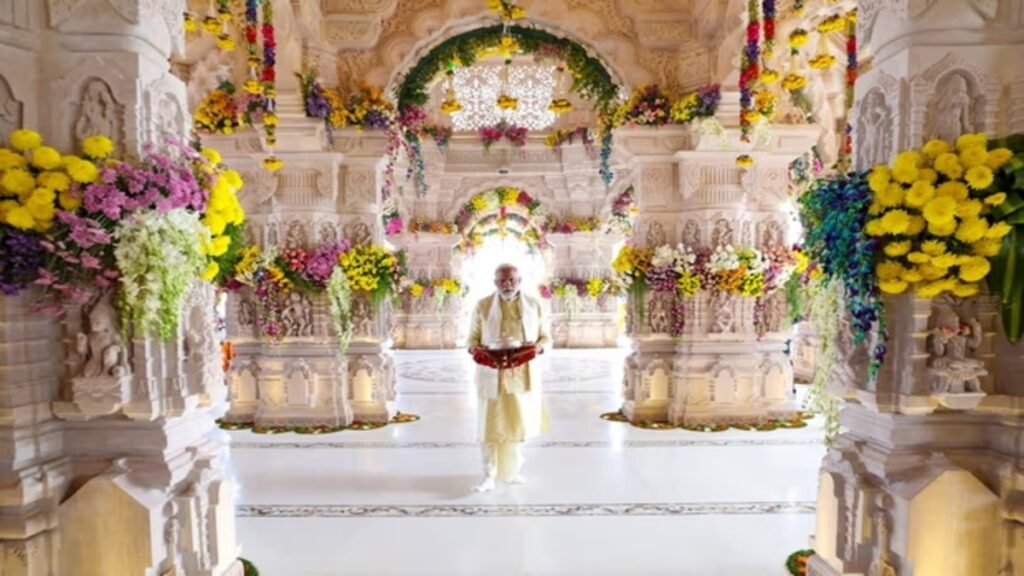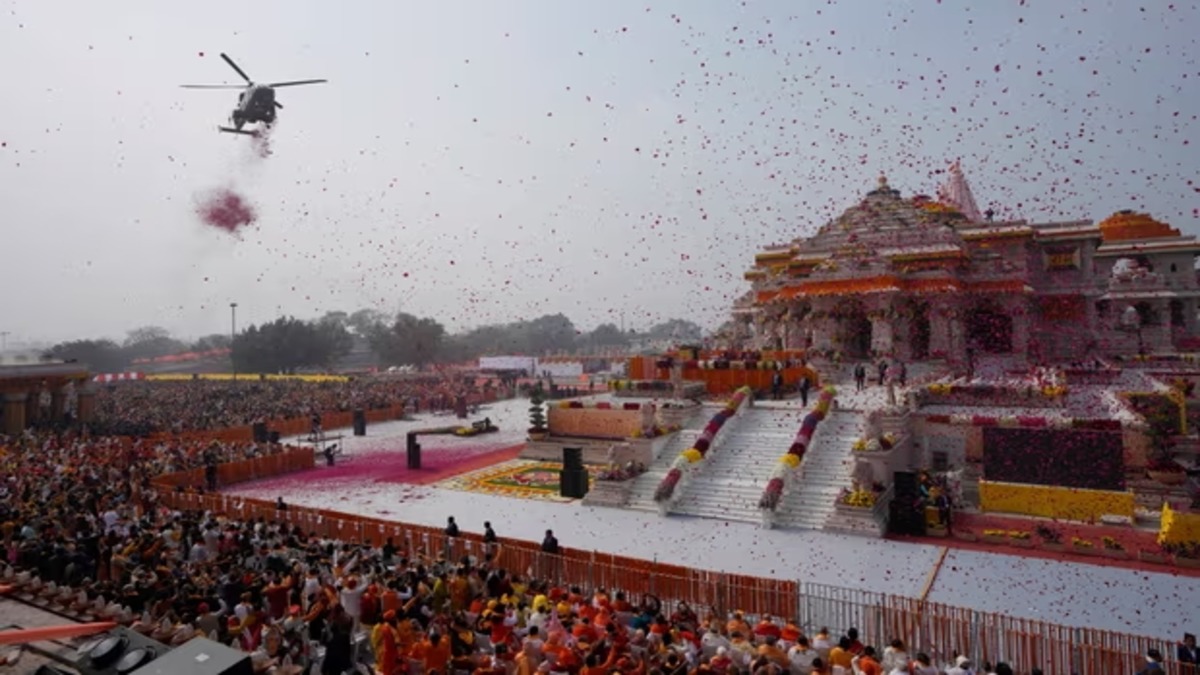An Indian air force helicopter showers flower petals during the opening of a temple dedicated to Hinduism’s Lord Ram in Ayodhya, India, on January 22, 2024. Photograph: Rajesh Kumar Singh/AP
Amidst the cascade of petals and the radiant smiles of celebrities, Modi revealed his vision for a Hindu India by inaugurating the Ram temple. Authored by Mukul Kesavan, the piece explores the temple, situated on the grounds of a dismantled mosque, symbolizing the culmination of the century-long Hindu right’s undertaking.
Kesavan, a Delhi-based writer, underscores the dual nature of this event on January 22, 2024. It’s a historic milestone as the ostensibly secular Prime Minister, Narendra Modi, takes center stage. In just over 30 years, India’s political stance has shifted from condemning the mosque’s demolition to celebrating it as a foundational act for a reborn republic with the infant Ram idol as its icon.
However, the temple’s construction was not merely an end but a means to assert Hindu supremacy over religious minorities, especially Muslims. The Bharatiya Janata Party’s campaign for the temple served as a tool to dismantle institutional safeguards protecting India’s ostensibly secular democracy.
In this endeavor, the BJP has triumphed, positioning itself as the pan-Indian party of Hindu grievance. The ritual at Ayodhya, featuring prominent figures like Modi, Mohan Bhagwat, Yogi Adityanath, and Anandiben Patel, reflects the culmination of nearly a century of Hindu triumphalism by the Rashtriya Swayamsevak Sangh (RSS), Modi’s and the BJP’s parent organization.

The consecrated idol, intentionally smaller, symbolizes Modi’s role as the regent ruling on behalf of this eternal child, signifying a lasting Hindu regency. Beyond the sanctum, the temple campus hosted an audience comprising ascetics, members of Hindu organizations, early supporters, and celebrities like Mukesh Ambani, Amitabh Bachchan, and Rajinikanth.
The atmosphere, reminiscent of India’s Republic Day parade, signaled that Bhagwat and Modi’s vision of a Hindu Rashtra is a work in progress. Yet, the spectacle’s significance lies not in those present but in those intentionally absent – every Indian not aligned with political Hinduism. In this era of Donald Trump, it’s crucial to acknowledge that the ethno-nationalism embodied by the Ayodhya temple is not a recent populist endeavor but a century-old political project supported by millions of militant cadres. Modi and Bhagwat’s vision for India resembles Netanyahu’s Israel, expansive and intolerant, but on a subcontinental scale.
#RamTempleInauguration #HinduRashtra #IndiaTransformed #CulturalMilestone #ModiLegacy
